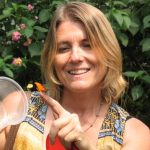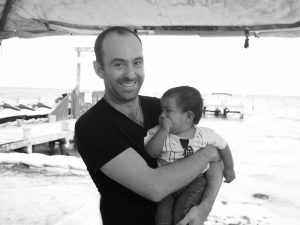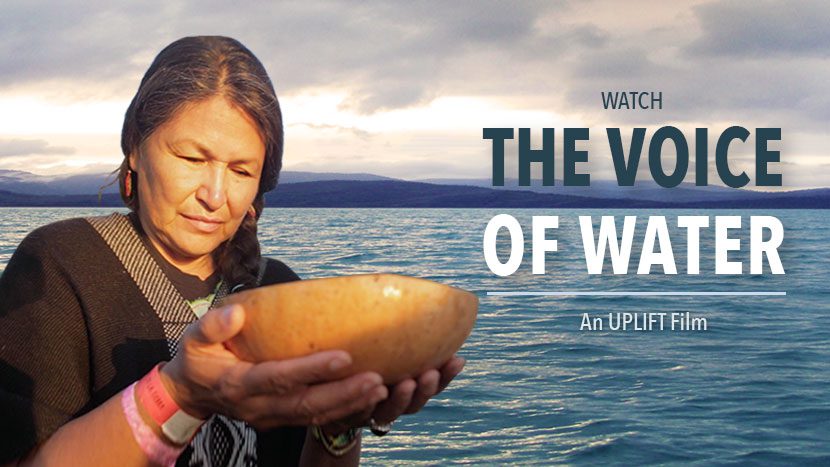At the dawn of 2019, thousands of Latin American asylum seekers huddle in tent cities along our southern borders, having risked their lives for the hope of a better future for their families. Thousands of children languish in concentration camps and detention centers scattered around the country, their parents unable to claim them. Americans wonder what went wrong, and what to do about it.
A decade ago, today, The Esperanza Project was delving into the roots of this crisis before it emerged into the public eye. That’s why we feel it’s important to reflect back on the very first post published on this platform in 2009:
 “Many of you know I am currently in the process of gearing up for a year-long journey with a mission: to raise the visibility of the unsung heroes of Latin America’s environmental movements. In the process I hope to build a well of creative ideas and inspiration through the new web portal I’m designing, a networking tool for the groups themselves and a sharp contradiction to the sense of hopelessness and cynicism about the future that has enveloped much of our population. I’m calling it The Esperanza Project, named for the Spanish word for hope.”
“Many of you know I am currently in the process of gearing up for a year-long journey with a mission: to raise the visibility of the unsung heroes of Latin America’s environmental movements. In the process I hope to build a well of creative ideas and inspiration through the new web portal I’m designing, a networking tool for the groups themselves and a sharp contradiction to the sense of hopelessness and cynicism about the future that has enveloped much of our population. I’m calling it The Esperanza Project, named for the Spanish word for hope.”
The Esperanza Project began as a platform to honor the work of those people, as a space to share the interviews, insights and discoveries of a singular journey through the Americas in 2010 by founder Tracy L. Barnett.
Since then, it’s grown into so much more: a nonprofit organization promoting environmental, indigenous rights and social justice education throughout the Americas, and a far-flung network of multimedia communicators and a magazine giving voice to creative writers, photographers and videographers addressing these issues in inspiring ways. Themes range from ecovillages and permaculture initiatives to hydroelectric dams and ecotourism to indigenous rights and climate change.
Our journey southward ended up revealing so many answers to those questions — and so many creative and committed people already actively engaged in generating and manifesting solutions.
Already with collaborators from the United States to Argentina, and from Mexico to Australia, we are looking to expand our offerings this year to include more voices, to experiment with different forms of expression and to cover more issues than ever before.
2018 was an important year for us on so many levels. Here are just a few of the achievements of our hardworking team:
-
- Co-editor Angélica Almazán: Played a key role in the organization of “El Llamado de la Laguna”, Mexico’s first Bioregional Gathering in nearly 20 years, continuing the legacy of the Vision Council-Guardians of the Earth, and worked actively throughout the year in Bacalar to preserve the sacred Lagoon of Seven Colors in southern Quintana Roo.
- Esperanza Project Foundation co-founder and board president Hernán Vilchez: Began a powerful new documentary film project, “When Bodies Talk: A Journey to the Dark Side of Female Contraception,” highlighting the many ways the contraceptive industry has undermined women’s health.
Cuando los cuerpos hablan / When bodies talk – Trailer from Kabopro Films on Vimeo.
Hernán’s work continues on The Guardians film series, which is being promoted along with four other powerful film series by our partner in film markets and among online and cable networks by our partner distributor Tsunum.
 Web guru, ecosocial entrepreneur and investigative journalist Jake Ling: Redesigned and revitalized the www.esperanzaproject.com, creating a new look and managing the mysterious inner workings of this online magazine while simultaneously supporting the work of Mayan Journalist Pedro Canché at https://noticiaspedrocanche.com, among that of other Latin American activists and journalists. Jake is also the cofounder Ecuador Eco Volunteer, an innovative project connecting travelers with community-based sustainability projects in Ecuador. He has also been hard at work on a book about Canché, and frequently travels from his base in Australia to cover social movements in Latin America.
Web guru, ecosocial entrepreneur and investigative journalist Jake Ling: Redesigned and revitalized the www.esperanzaproject.com, creating a new look and managing the mysterious inner workings of this online magazine while simultaneously supporting the work of Mayan Journalist Pedro Canché at https://noticiaspedrocanche.com, among that of other Latin American activists and journalists. Jake is also the cofounder Ecuador Eco Volunteer, an innovative project connecting travelers with community-based sustainability projects in Ecuador. He has also been hard at work on a book about Canché, and frequently travels from his base in Australia to cover social movements in Latin America.
- Media producer, environmental activist and educator Ivan Sawyer: Produced a short documentary on the Rights of Water, featuring communities and leaders in North Central and South America as part of the ‘Voices of Amerikua’ media project and that was released in celebration of World Water Day. March 22, 2018.

- Covered themes of urgent importance for not only The Esperanza Project but a growing number of international magazines, newspapers and websites:
- In Mexico, a series of stories about efforts to bring a more enlightened form of tourism and save Bacalar’s threatened Lake of Seven Colors, for the Washington Post and The Esperanza Project.
- In Panama, continued coverage of the fight of the Ngäbe-Buglé people to save their sacred site and way of life from the destruction of a hydroelectric dam.
- In Mexico, a series on the sacred medicine traditions of the Wixarika or Huichol People, for Intercontinental Cry‘s Indigenous Medicine Stories series, as well as ongoing coverage of the Wixárika struggle to defend their lands and culture.
- In the U.S. and beyond, initiatives to rein in the plastic pollution crisis contaminating our rivers and oceans, killing wildlife and fueling climate change, for Texas Observer and Rice Business Wisdom.
- In the U.S., a nascent movement to reclaim our democracy from corporate interests and the Republican Party, for our new Medium column, the Houston Chronicle, Rice Business Wisdom and the Esperanza Project.
- In the wake of the increasingly devastating California fires, a glimpse into the rise of megafires, the causes and effects, and what needs to be done about it, for USA Today, Medium and the Esperanza Project.
- A look into the rise of craftivism and artivism, the use of art and craft to supercharge a different kind of activism, and interviews with three of its proponents, for Yes! Magazine and the Esperanza Project.
- On the U.S. border with Mexico, on-the-ground coverage of Christmas in Tornillo: The Occupation, a creative brown-led resistance movement aimed at freeing the 15,000 migrant children now being held in Tornillo, Texas, and other US detention facilities throughout the country, for Yes! Magazine and the Esperanza Project.
- In Mexico, coverage of the presidential campaign of María de Jesús Patricio, or Marichuy, the country’s first indigenous woman candidate.
 Finally, the result of a decade of labor, the book resulting from that 2010 journey through the Americas is now finished. Tracy L. Barnett’s environmental travel memoir, Looking for Esperanza: One Woman’s Search for Hope in the Other America, is now complete and the process has begun to find the right publisher. We will be forming a launch team to help support the rollout of this book in a way that will honor the many unsung heroes who shared their stories, and we would love to hear from those of you who would like to participate.
Finally, the result of a decade of labor, the book resulting from that 2010 journey through the Americas is now finished. Tracy L. Barnett’s environmental travel memoir, Looking for Esperanza: One Woman’s Search for Hope in the Other America, is now complete and the process has begun to find the right publisher. We will be forming a launch team to help support the rollout of this book in a way that will honor the many unsung heroes who shared their stories, and we would love to hear from those of you who would like to participate.
Meanwhile, while independent journalism is a labor of love, it is not free. Your contribution helps in so many ways, from translation to web design to travel expenses on important stories. Our volunteer staff gives their time and even their funds from the heart, but a little buy-in from you validates our work and helps us carve out the space to do so much more.
We invite you to participate in the co-creation of journalism centered on life, and on those who are building a better future for all human and non-human inhabitants of this planet. Find out how you can volunteer your time to be a part of it here. And please make your tax-deductible contribution to The Esperanza Project right here.